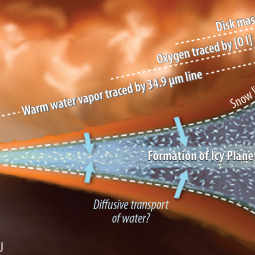A team from NASA’s Goddard Space Flight Center in Greenbelt, Maryland, has been selected to develop a new, third-generation facility science instrument for the Stratospheric Observatory for Infrared Astronomy, SOFIA.
The principal investigator, Samuel Harvey Moseley will lead the team to develop the High Resolution Mid-InfrarEd Spectrometer (HIRMES). The team consists of co-investigators from Space Dynamics Lab, Precision Cryogenic Systems, Inc., University of Michigan, University of Maryland, Smithsonian Astrophysical Observatory, Johns Hopkins University, Space Telescope Science Institute, Cornell University and University of Rochester.
Moseley and his team will construct HIRMES over the next two and one-half years with flights on board SOFIA slated for spring 2019. At that time, this unique research asset will also be made available for use by the larger astronomical community.
“HIRMES will help researchers determine the location of the raw materials that are the building blocks of life and how their position within the interstellar medium helps planetary systems, like our own solar system, evolve,” said Hashima Hasan, SOFIA program scientist at NASA Headquarters in Washington, D.C. “HIRMES builds upon Moseley’s long history of superior instrument design. Included among his many achievements is the development of the microshutter arrays for the James Webb Space Telescope’s near-infrared spectrometer.”
The HIRMES spectrometer is optimized to detect neutral atomic oxygen, water, as well as normal and deuterated (or “heavy”) hydrogen molecules at infrared wavelengths between 28 and 112 microns (a micron is one-millionth of a meter). These wavelengths are key to determining how water vapor, ice, and oxygen combine at different times during planet formation, and will enable new observations of how these elements combine with dust to form the mass that may one day become a planet.
HIRMES will provide scientists with a unique opportunity to study this aspect of planetary formation, as SOFIA is currently the only NASA observatory capable of accessing these mid-infrared wavelengths. Infrared wavelengths between 28 and 112 microns will not reach ground-based telescopes because water vapor and carbon dioxide in the Earth’s atmosphere block this energy. SOFIA is able to access this part of the electromagnetic spectrum by flying between 39,000 feet and 45,000 feet, above more than 99 percent of this water vapor.
NASA anticipates soliciting proposals for the next (fourth generation) instrument on SOFIA in 2017.
SOFIA is a Boeing 747SP jetliner modified to carry a 2.5-meter, 100-inch, diameter telescope. It is a joint project of NASA and the German Aerospace Center. NASA’s Ames Research Center in California’s Silicon Valley manages the SOFIA program, science and mission operations in cooperation with the Universities Space Research Association headquartered in Columbia, Maryland, and the German SOFIA Institute at the University of Stuttgart. The aircraft is based at NASA’s Armstrong Flight Research Center's Building 703, in Palmdale, California.
Points of Contact
Nicholas A. Veronico
SOFIA Science Center, Ames Research Center, Moffett Field, California
nveronico@sofia.usra.edu
650/224-8726
